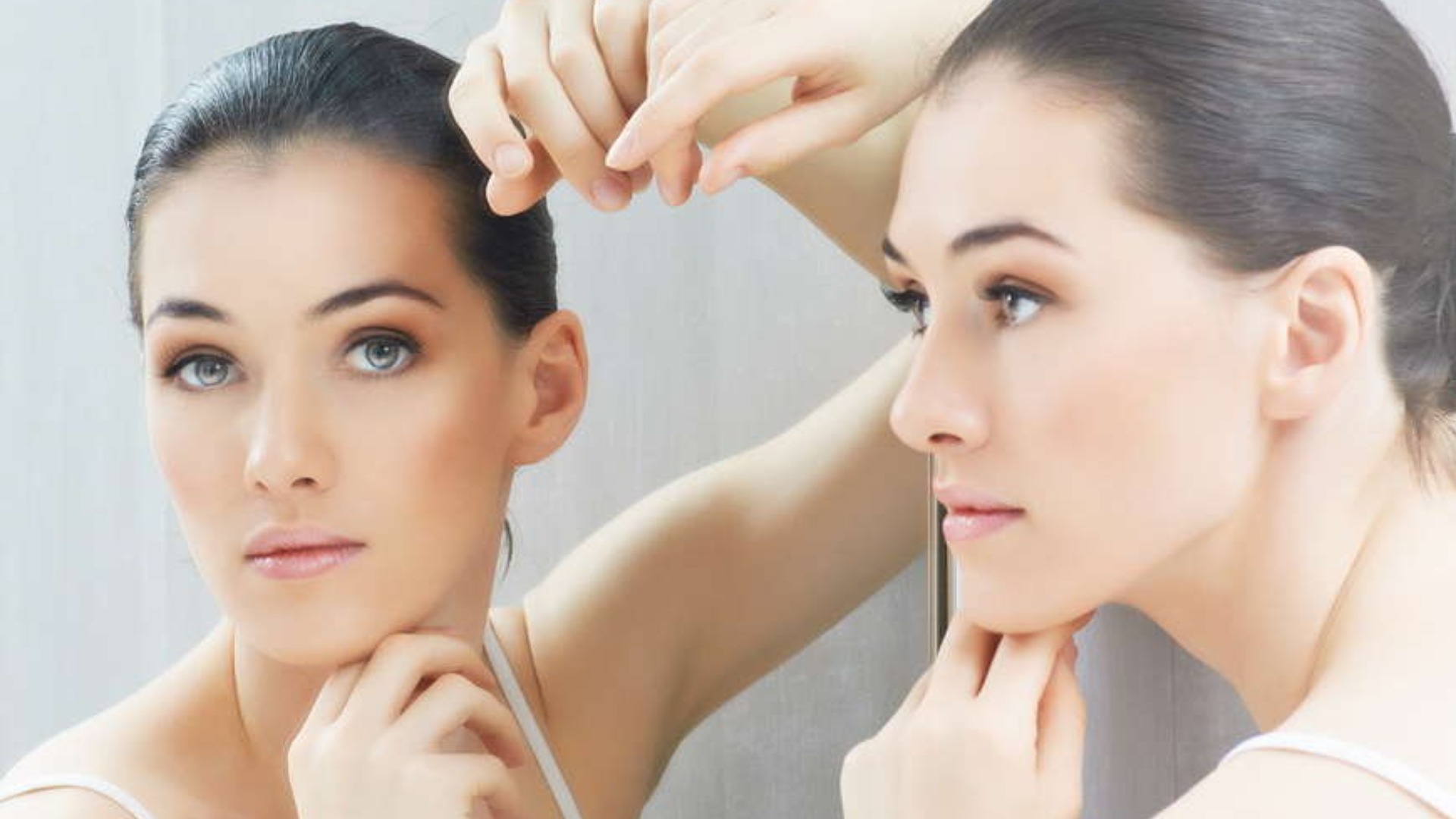, such as hyaluronic acid, are sometimes more effective for nasolabial folds than Botox. Nasolabial folds are mainly due to loss of volume within the facial region and laxity of the skin. The depressions can thus be smoothed out, and fullness can be restored by replacing the lost volume. Fillers should be introduced in layers in the depth of the fold and microinjections in the surrounding area, with a view to naturally enhancing the overall contour. Botox may be used to help relax the surrounding muscles in order to decrease localized tension; its effect is, however, relatively limited.
Botox Basics
is a neurotoxin protein derived from the pathogenic bacterium Clostridium botulinum, which can be used to block the release of acetylcholine, preventing communication between the nerve endings and muscles and temporarily “relaxing” the muscles and reducing dynamic wrinkles. Aesthetic medicine now employs Botox to relax muscles frequently moving due to facial expressions, such as frown lines, forehead wrinkles, and crow’s feet. Botox relaxes the muscles and therefore applies only to dynamic wrinkles. Because the ability to affect is scant, because relaxing the muscles is primarily its role, Botox is seldom applied on nasolabial folds because nasolabial folds result not from muscle movement but from structural issues stemming from tissue loss and falling skin.
Although the effect of Botox is not permanent, it generally lasts for about 3 to 6 months. Its longevity will depend on the injection dosage and the patient’s rate of metabolism. The muscles gradually regain normal activities over time. The effect in the injected area will also fade as wrinkles reappear. For a person who uses a lot of active facial expressions and loves making exaggerated movements, the effect of Botox will last shorter; hence injections should be done more frequently to achieve the maximum outcome of effects.
In fact, it’s a more subtle effect of Botox in the treatment of nasolabial folds. Some doctors may use only a little amount of Botox in the area of nasolabial folds to give relief from the tension of the muscle surrounding it, but Botox alone cannot deeply reduce nasolabial folds. Therefore, in the treatment of nasolabial folds, Botox is not the first option; however, it is an auxiliary method used with fillers.
Filler Facts
Cosmetic are injectable products used primarily to fill facial depressions and wrinkles and enhance skin volume. Fillers commonly in use include hyaluronic acid, collagen, calcium hydroxylapatite (Radiesse), and poly-L-lactic acid (Sculptra). Hyaluronic acid fillers are the most popular and commonly used because of good biocompatibility, low rejection rates, and the ability to attract moisture in the skin following injection to keep it hydrated and elastic.
Nasolabial folds are mainly due to loss of facial volume, significant fat loss in the cheek, and laxity that increases the appearance of nasolabial folds in the facial structure. Fillers can be placed within the nasolabial folds and surrounding areas to restore the lost volume physically, therefore filling out the folds.
Reversibility is another advantage of hyaluronic acid fillers: if the outcome of injections is not satisfactory or complications develop, they can be dissolved by injecting hyaluronidase to return the skin to its original condition. Effects of fillers are also gradually absorbed by the body over a period of 6 to 18 months on average depending on the type of filler and individual metabolic rate.
For deeper folds of the nasolabial fold or sagging of the face, one may consider calcium hydroxylapatite fillers like Radiesse. They fill up depressions but also stimulate the production of collagen, thus tightening the skin. Compared to hyaluronic acid fillers, the used calcium hydroxylapatite has a greater shaping effect and longer duration but is irreversible, so it calls for a high degree of precision from the doctor while injecting.
How They Work
Botox and fillers work with two different mechanisms. Botox blocks the nerve signals that briefly loosen muscles, trying to decrease dynamic wrinkles formed during expressions. Its action is at the level of muscle, where it weakens muscle activity and reduces its repeated creation. That limits its use on static wrinkles such as deep structural depressions like nasolabial folds, which it cannot be useful due to the unhelpful relaxation of the muscles.
Fillers, on their part, provide immediate restoration of volume by filling up the depressed areas, working directly upon the dermis and subcutaneous fat layers to deepen the skin’s thickness and elasticity, therefore smoothening up the face for a more aesthetically fuller look. tend to attract and hold water, making it result in deep-seated long-term hydration that ensures injected areas appear naturally smooth. For the static wrinkles of nasolabial folds, the direct filling effect of fillers can effectively enhance facial fullness and improve the smoothness of facial contours by restoring volume.
Calcium hydroxylapatite fillers bring filling effects and stimulate collagen production in the skin to regain its elasticity and firmness. This characteristic of them makes them excellent for the treatment of nasolabial folds, especially in older patients, because they offer a more durable structural improvement.
Best for Folds
Fillers are generally a more suitable choice for treatment of nasolabial folds. Nasolabial folds can be caused by several factors, such as , and gravitational impact. Depending on which kind of filler is used to replace the volume lost, it fills up the depressions and thereby lessens their depth and creates an evident aesthetic effect.
Botox is commonly used as an auxiliary treatment when dealing with nasolabial folds. Since the impressions caused by nasolabial folds are due to factors other than muscle activity, resorting to Botox as a simple cure based on its paralytic action cannot solve the problem of indentation completely. Thus, fillers are the most specific and long-term remedy for correction of nasolabial folds. In some cases, physicians may also use a small amount of Botox in the region of the upper lip, near the nasolabial folds, to provide localized relief of muscle pull that helps fillers achieve a more balanced and natural facial effect.
Natural appearance requires proper right fillers and injection depths. Hyaluronic acid fillers may be sufficient for younger patients with shallow nasolabial folds. For deeper folds, or for more severe skin laxity, calcium hydroxylapatite or poly-L-lactic acid can be used for deeper support and stimulation of collagen, providing much more durable results that look much more natural.
Pros and Cons
Botox and fillers each have their own advantages and disadvantages. Here’s an overview:
Advantages:
-
Fillers: They can immediately fill depressed areas and recover lost volume to create natural-looking results. Fillers work best for static wrinkles, such as the nasolabial fold. Filler effects usually last longer; the duration depends on the type of filler and injection site, from 6 to 18 months. More importantly, hyaluronic acid fillers are reversible and may be dissolved with certain enzymes if the desired results are not satisfactory, so they can be adjusted.
-
Botox: The effects occur within a relatively short time period and prove to be most effective in the treatment of dynamic wrinkles such as the horizontal lines across the forehead and crow’s feet. Botox is relatively cheaper as compared to hyaluronic acid fillers and allows for a rapid recovery time. Even if nasolabial folds are superficial or if fillers cannot be utilized, small amounts of Botox can be employed to complement with fillers in achieving maximum effects.
Disadvantages:
-
Fillers: These can cause irregular asymmetry, lumps, or even skin allergies. In a worst-case scenario, when a physician is not skilled or the filling is administered incorrectly, it can even impair facial expressions. Additionally, fillers are something that has to be replenished periodically to achieve results, and repeated replenishment gets very expensive in the long run.
-
Botox: The duration of action is shorter, and it needs to be re-injected every 3 to 6 months. Overuse or improper injection may lead to a frozen expression. Botox alone is less effective for static wrinkles, such as nasolabial folds, making it unsuitable as the primary treatment for nasolabial folds.
Side Effects
Both fillers and Botox have the potential to cause side effects. Some side effects of fillers are redness, minor pain, and bruising in the injection site, which however resolve in a very short period. Moreover, if a doctor is not experienced, then the fillers can become lumpy, sien bulk, or migrate under the skin, then hence causing disfigurement. Long-lasting fillers containing calcium hydroxylapatite or poly-L-lactic acid may lead to granuloma formation that may affect the aesthetics of the skin texture over time.
Mild side effects usually include bruising at the injection site or mild headaches. In extreme instances, if the injection is done incorrectly, complications may reach muscle weakness and loss of facial symmetry, drooping eyelids. Side effects, however, usually decrease when the effect wears off. In this respect, reliance on a doctor with adequate experience and respectable products is essential.
Making the Choice
Fillers or Botox: The choice between fillers and Botox would depend upon the needs of individual patients and conditions of their face. For more pronounced nasolabial folds, fillers would certainly be a direct and more effective option as they help and even out the nasolabial folds by volume restoration. For slight cases of nasolabial folds or when fillers are not applicable, the doctor can advise the use of only a little bit of Botox to relax the muscles around it and acquire a more natural-looking effect.
Regardless of the choice, there needs to be a professional assessment made for the chosen plan so that it is appropriate. In most cases, professionals may advise combining botox and fillers while ensuring that other aesthetic treatments such as laser or skin tightening are incorporated to ensure one gets maximum anti-aging effects. In this case, a doctor needs to be experienced and skilled since injectable aesthetics require accurate techniques in matching facial structure.
You can discuss with your doctor the different methods for the pros and cons of each before you decide on one. With good communication of what you expect from cosmetic injections, you can achieve a safer, more ideal result through a good professional operation. Cosmetic injections do have immediate effects but do pose some risks





